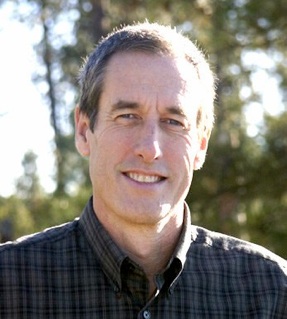Spokane Watershed Heroes
An interview with
Scott Chaney
February 4, 2010

Spokane Watershed Heroes
An interview with
Scott Chaney
February 4, 2010
John Osborn: How do you know Lake Spokane?
Scott Chaney: I'm acquainted with the lake because live on it. We're down there almost every day during the summer, swimming and boating.
I got acquainted with the efforts going on to clean up Lake Spokane as a result of attending one of Sierra Club’s water conferences. I came away very impressed, not only with the knowledge and expertise of the presenters, but that of the audience as well, and with the amount of effort and resources so many were putting into cleaning up the river. So much was going on, it seemed to be an opportunity of a generation - something not to be ignored. So I started following your efforts and guidance and ended up attend FERC and TMDL meetings and trying to motivate my community to become involved as well.
JO: For others who care about the future of Lake Spokane and the Spokane River, what do you want them to know/what advice would you give?
Scott: We're responsible for leaving this earth better than we found it. But as with many things environmental, there are competing interests and the issues can become quite complex. I've found myself depending on the Sierra Club for invaluable, objective analysis of the issues, explained in a way that even I can understand.
Although my children would probably disagree, I usually don't like to give advice, but since you asked.... When it comes to environmental issues, it's easy to become overwhelmed if you focus on saving the entire planet. But if you take ownership of your own backyard, then it's only natural to become involved. I've come to depend of you folks for keeping me aware of the opportunities to help improve our river and lake, and for providing me with the objective knowledge to make intelligent decisions about what efforts I can take to fulfill my responsibilities as a steward of the gifts I've been given.

Toxic algae in Long Lake
Ecology Department warns residents
to stay out and keep animals away
Becky Kramer
Spokesman Review, September 30, 2009
The discovery of toxic algae blooms in Long Lake has prompted authorities to warn residents to stay out of the water and keep their pets and livestock away, too.
A water sample taken about a mile north of Suncrest in Stevens County had concentrations of a neurotoxin called microcystin at levels of 18,700 micrograms per liter, according to lab results released Tuesday. The threshold for concern is 6 micrograms per liter, said Jani Gilbert, a spokeswoman at the Washington Department of Ecology.
“It’s probably all over the lake,” Gilbert said. “We’d like people to stay away from the water.”
No illnesses have been reported from the current bloom in Long Lake, aka Lake Spokane. However, blue-green algae blooms pose health risks to people, pets and wildlife. Human health effects can include stomach pains, vomiting, diarrhea, skin rashes and nerve and liver damage. Pets and livestock have died from exposure.
“That stuff is really nasty,” said Scott Chaney, a Nine Mile Falls resident who took the sample on Sept. 23, which was sent to King County Environmental Labs for analysis.
Chaney said he started noticing a powdery algae bloom in the lake around mid-August. He became concerned when it started forming thick mats. Since neither the Ecology Department nor the Spokane Regional Health District tests for algae blooms, Chaney requested a kit from the state and paid the postage to send it into the lab.
“These come every year, so I just assumed that the government would be monitoring it. … We play in the lake all the time,” said Chaney, who has three children. “It could have been toxic for a month and nobody would have known because there’s not a monitoring program set up to keep on eye on it.”
Gilbert said that her department monitors other facets of water quality in the reservoir behind Long Lake Dam, but doesn’t have the budget to test for toxic algae. Julie Graham, a health district spokeswoman, could not be reached for comment Tuesday afternoon.
Blue-green algae blooms are common in Long Lake. “We get them in varying severity almost every year,” Gilbert said.
Toxicity is hard to predict, according to Ecology officials. While many blue-green blooms are not toxic, some blue-green algae produce nervous system or liver toxins. A bloom that tests nontoxic one day can become toxic the next. The algae looks like green paint floating on the water.
“Most of the toxin is in the scum that people can see on top of the water,” Kathy Hamel, an aquatic plant specialist, said in a prepared statement. People should avoid the scum and keep pets and livestock from drinking scummy water, she said.
Last year, Newman Lake experienced a toxic blue-green algae outbreak, with microcystin levels at 191 micrograms per liter. Some residents blamed the outbreak for sickening their dogs.
Jim Bellatty, a water quality manager with the Ecology Department in Spokane, said long-term plans to reduce phosphorus flowing into the Spokane River should lessen blue-green outbreaks over time.
Chaney, the Nine Mile Falls resident, said he hopes to see a volunteer network created for blue-green algae testing, because government agencies don’t have the budget for it. He’d be interested in participating.
“I’m vested in the quality of the water in the lake,” he said.
Scott Chaney. He took action on behalf of Lake Spokane.